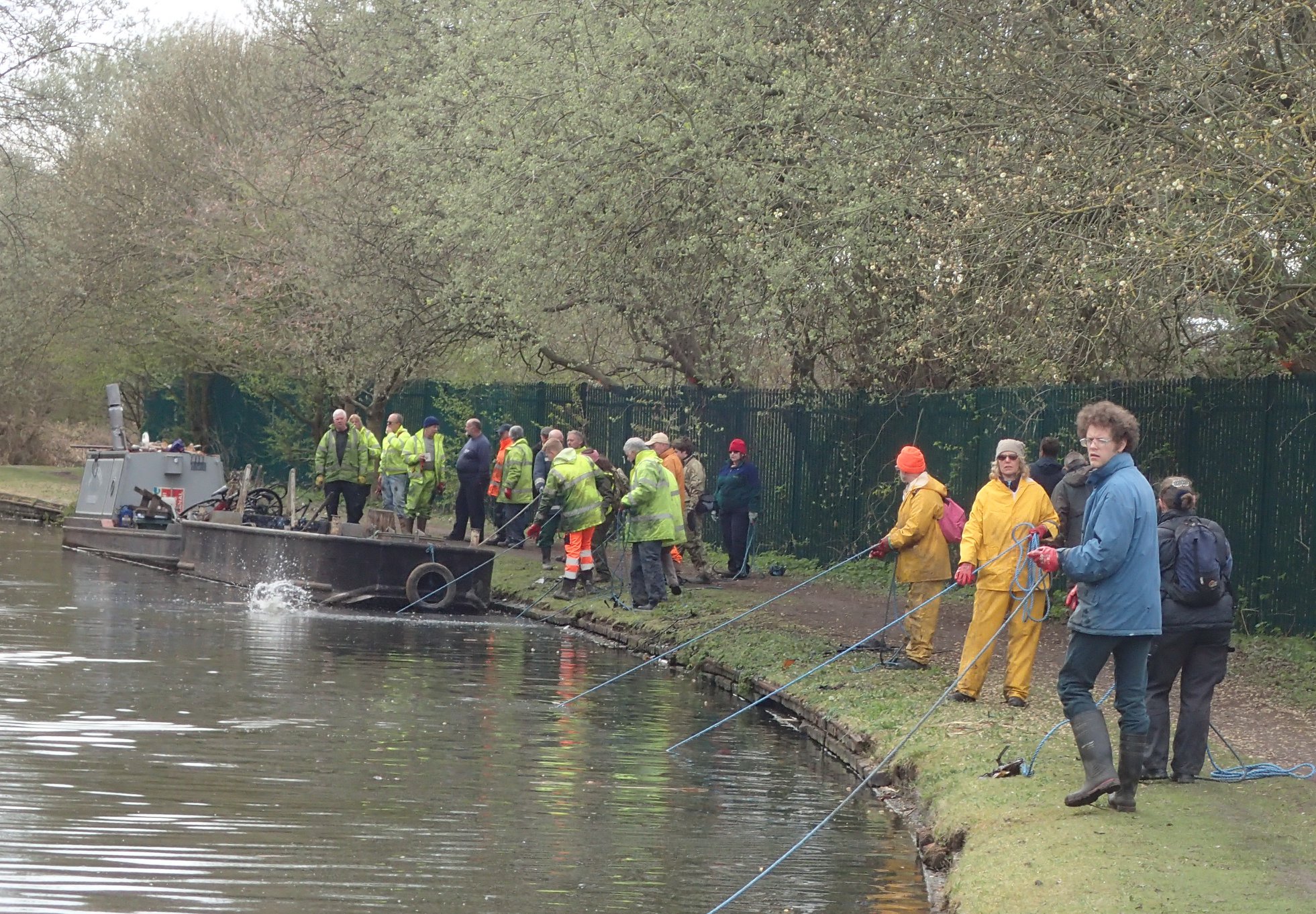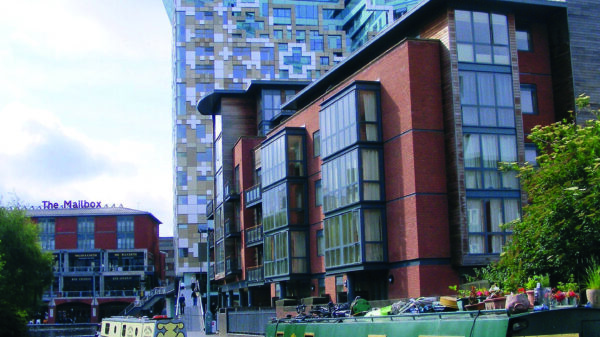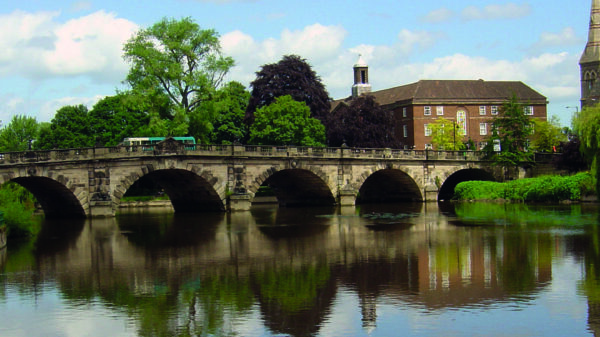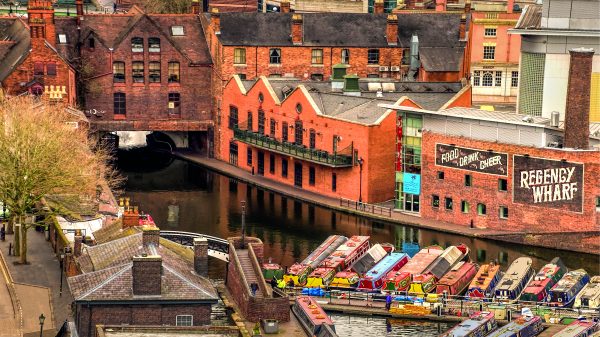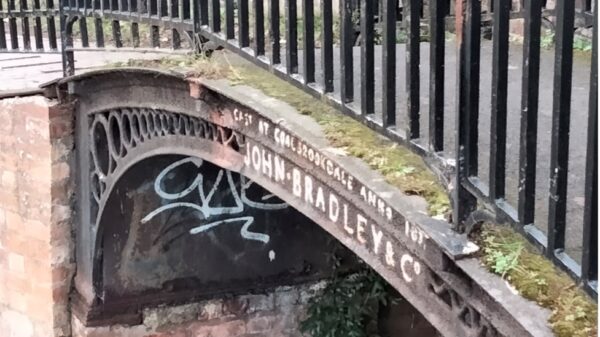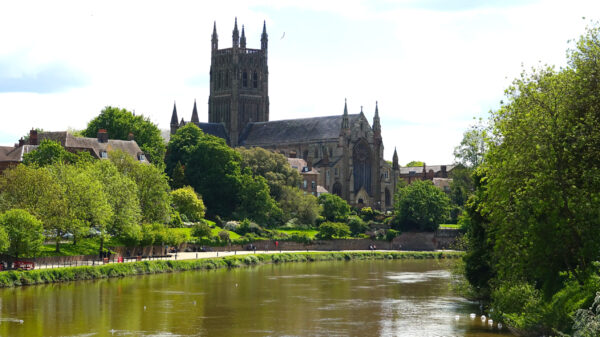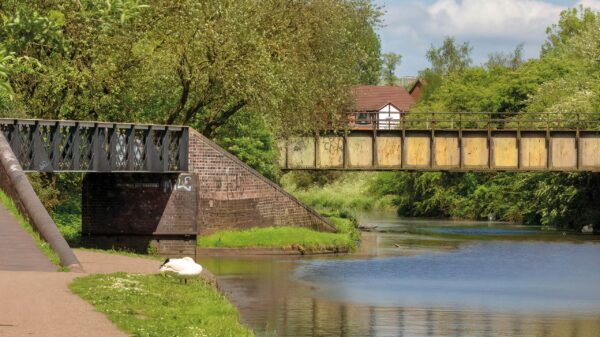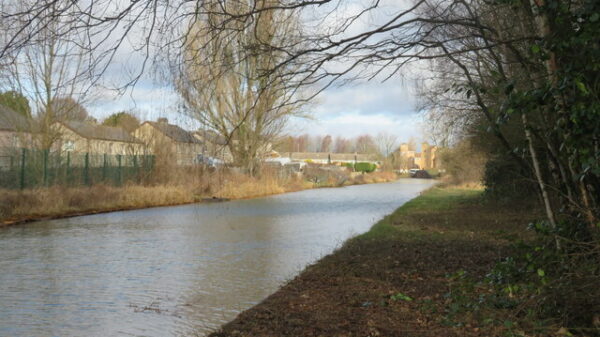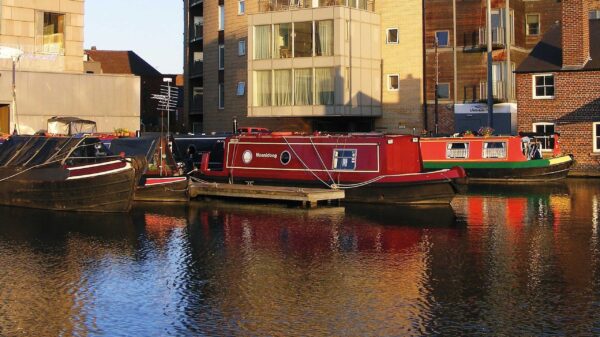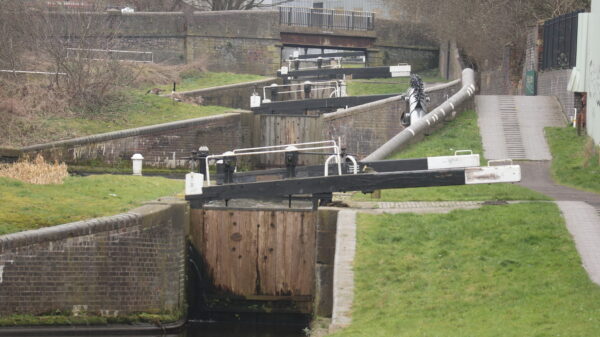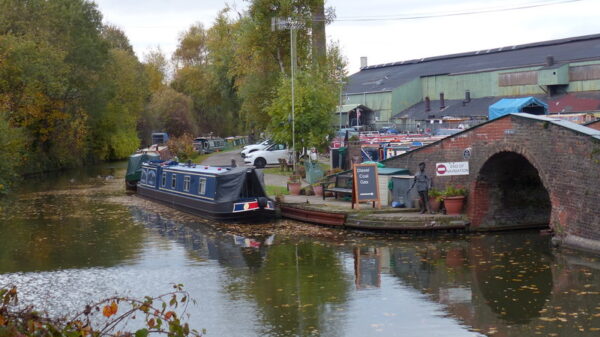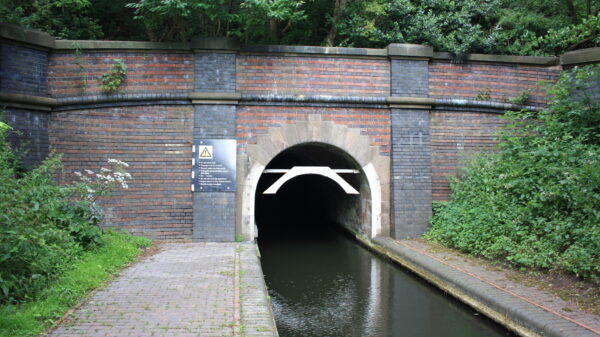1. Worcester Bridge and River Severn
Start your walk at Worcester Bridge from where there are fine views of the river running south through Worcester past the cathedral and north towards the bridge for the original Hereford & Worcester Railway and beyond it the Sabrina Footbridge, a cable stay structure dating from 1992. Worcester Bridge was originally built by John Gwynne in 1781 and reconstructed in 1930 – the parapet displays some interesting plaques. The size of the barges forming the last significant trade on the river (an oil supply from Sharpness to Stourport operating between 1930 and the early ’70s) was limited by these arches.

